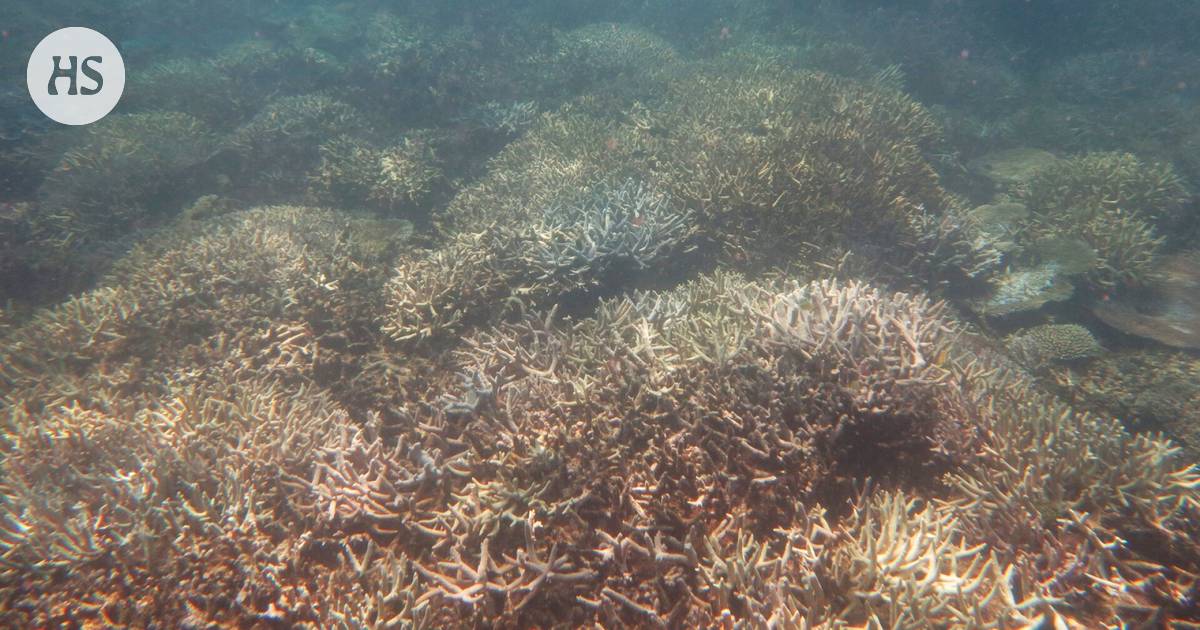Climate|Spraying seawater into the clouds is being tested on Australia’s Great Barrier Reef. It is the only technological test where humans attempt climate modification
The summary is made by artificial intelligence and checked by a human.
Climate modification in other parts of the world can be reflected in European weather.
The bleaching of clouds increases the reflectivity and affects the climate.
Small field tests are carried out near Australia’s Great Barrier Reef.
There are too many risks of climate modification if they are done on a large scale.
If man starts experimenting with climate modification in other parts of the world, can it be reflected in the weather in Europe.
Weather extremes could become more violent than usual, also in Northern Europe.
This is how you rate in the scientific journal Nature a study published last Friday.
A group of scientists studied the effects that cloud bleaching would cause across the west coast of the United States and Canada.
The modeling of the clouds was done for the Earth’s climate in 2010 and 2050.
The results were mixed. In the modeling timed to 2050, Europe’s weather would suffer from an experiment that would be conducted on the other side of the globe, in the Pacific Ocean.
Of the clouds in bleaching, the person himself increases the reflectivity of the clouds by various means.
In this way, part of the Sun’s radiation is immediately reflected back into space, and the Earth’s surface does not warm up as much.
Around the globe, clouds cover up to two-thirds of the earth’s surface all the time. Their impact on the climate is therefore great.
Professor Hannele Korhonen leads the Climate Research Program of the Finnish Meteorological Institute.
Hannele Korhonen, research professor at the Department of Meteorology.
Are there real experiments in the world where humans are already modifying the climate, research professor Hannele Korhonen?
The actual climate modification is not done yet. A series of field tests have been carried out near Australia’s Great Barrier Reef, where large amounts of seawater have been sprayed into the air.
The purpose of the experiments is to test the technology and understand whether it is possible to change the characteristics of the clouds.
In the method, seawater droplets are sprayed into the atmosphere. When the water evaporates, sea salt particles are left behind in the droplets.
These particles can, at least in theory, change the properties of clouds so that they reflect more sunlight into space. This would cool the sea surface locally.
Australia’s Great Barrier Reef has been badly affected by global warming. Colorful corals have turned gray. Some are dead or dying. This motivates climate modification research in the region.
If big countries like China or the United States experimented with climate modification on a large scale, what would be the risks of the experiments?
The risks would be much higher than in a local field trial in Australia.
In Nature, researchers modeled a case where clouds would be modified by two percent of the Earth’s sea areas. The effects would depend on the area and how strongly the modification is done.
Has climate modification somehow become more acceptable than, say, a generation ago?
The theoretical discussion has already been going on for 15 years. I would say that the discussion has expanded beyond scientific circles. At the same time, the discussion about the risks of tests has intensified.
Isn’t nature itself “experimenting” with climate change? For example, Pinatubo big in the Philippines the volcanic eruption in 1991 lowered temporarily lower the global average temperature by 0.5 degrees.
Only in large volcanic eruptions is the effect felt. Gases from Pinatubo’s eruptions rose into the upper atmosphere, to a height of more than 20 kilometers. There, the particles created from the gases actually affected the Earth’s climate.
